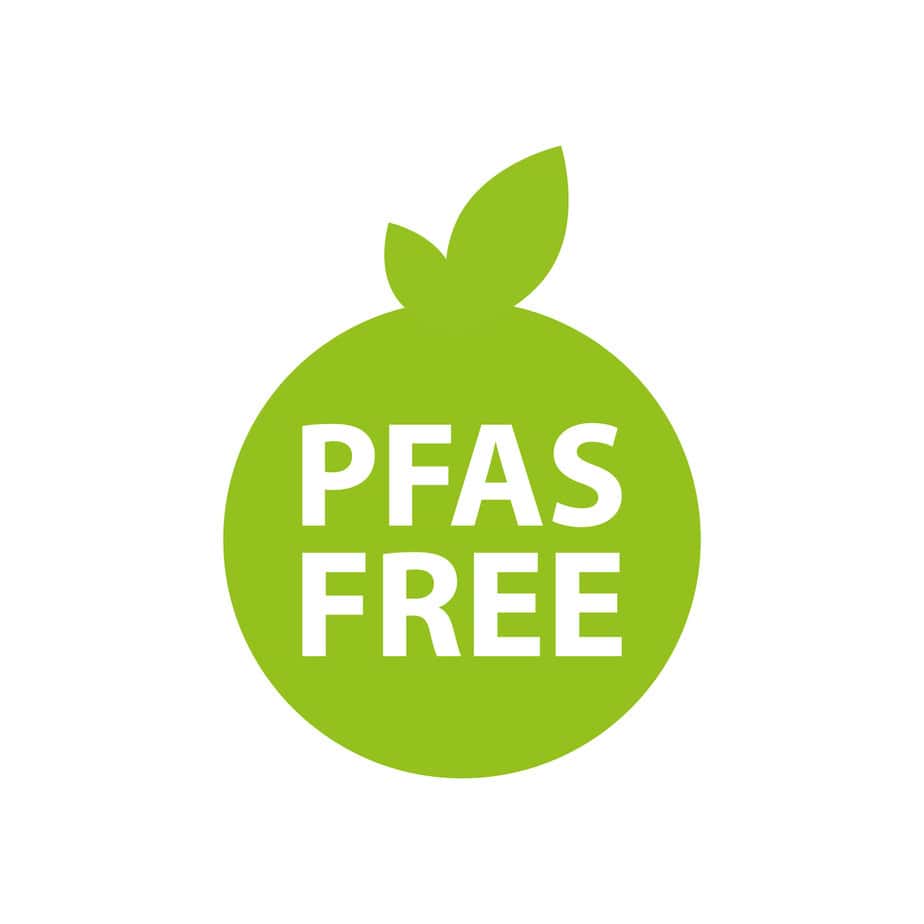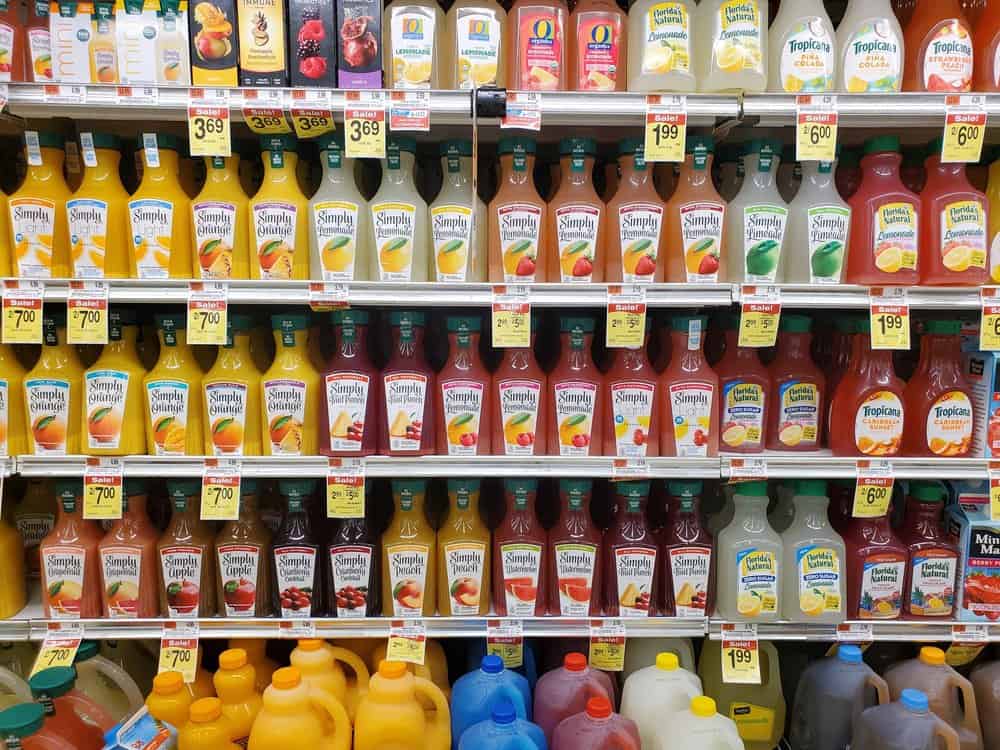California has been actively addressing the growing concern surrounding per- and polyfluoroalkyl substances (PFAS) and their impact on public health and the environment. PFAS are a group of man-made chemicals widely used in various industries, and their persistence in the environment and potential health effects have garnered considerable attention. Consequently, California is implementing legislation and regulation to protect its residents from the harmful impacts associated with these substances.
California has introduced legislation to reduce exposure to PFAS, such as Assembly Bill (AB) 1200, which bans using PFAS in paper, paperboard, and other plant-based food packaging starting from January 1, 2023. Meanwhile, the state’s Division of Drinking Water continues to develop standards for PFAS, including PFOA and PFOS, acknowledging their importance as a priority issue. Californians are urged to be aware of the products they consume and the alternatives available to minimize exposure to these potentially harmful substances.
Key Takeaways
- California is actively addressing PFAS-related concerns with legislation and regulatory initiatives.
- Assembly Bill 1200 bans the use of PFAS in plant-based food packaging from January 1, 2023
- Drinking water standards for PFAS, including PFOA and PFOS, are being prioritized by California’s Division of Drinking Water.

PFAS Sources and Exposure
Water Contamination
PFAS (Per- and polyfluoroalkyl substances) are a group of man-made chemicals that contaminate water sources worldwide. In California, there are various sources of PFAS in water, including industrial sites, landfills, firefighting training/response sites, and wastewater treatment plants/biosolids1. These contaminants have a knack for being persistent, toxic, and ubiquitous. If that wasn’t enough, they also have the unnerving ability to build up in humans and wildlife over time.

Consumer Goods
On top of water contamination, exposure to PFAS can occur via everyday consumer goods. These nefarious chemicals are used in products such as non-stick cookware (like Teflon), food packaging, stain-resistant fabrics, and even cosmetics. It’s no surprise, then, that PFAS have been detected in the air we breathe and the soil, we tread upon.
With such widespread presence, these chemicals have been found in the blood of nearly all people tested, indicating significant exposure in the U.S. population.
Firefighting Foams
Firefighting foams and fire response sites play a crucial role in PFAS contamination. These foams contain substantial amounts of PFAS, used for their water-resistant properties, helping to smother fires effectively. However, this effectiveness comes at the cost of environmental persistence and potential human health hazards.
When firefighting foam is used, it has a nasty habit of seeping into the ground, contaminating soil, groundwater, and eventually, our drinking water1. Alas, we must contend with yet another source of exposure in the quest to control PFAS in California.
PFAS contamination pervades our water, food, environment, and consumer goods. From non-stick cookware to the firefighting foams that aim to protect us, PFAS exposure is a prevalent and arduous challenge we must address with care and urgency.
Footnotes
- California State Water Resources Control Board. The four major sources of PFAS are fire training/fire response sites, industrial sites, landfills, and wastewater treatment plants/biosolids[10]. https://www.waterboards.ca.gov/drinking_water/certlic/drinkingwater/pfas.html
- CDC scientists found four PFAS (PFOS, PFOA, PFHxS or perfluorobutane sulfonic acid, and PFNA or perfluorononanoic acid) in the serum of nearly all people tested. This indicates widespread exposure to these PFAS in the U.S. population (https://www.cdc.gov/exposurereport/). ↩
Health Effects
Cancer Risk
It’s important to note that exposure to PFAS chemicals, such as perfluorooctanoic acid (PFOA) and perfluorooctane sulfonate (PFOS), has been linked to increased cancer risk. Although the evidence is inconclusive, numerous studies have pointed to these chemicals’ potential health hazards. Consequently, it’s essential to remain aware of the dangers and minimize exposure whenever possible.
Liver Damage
Moreover, research indicates that exposure to PFAS can cause liver damage. Animal studies have shown that these toxic substances may lead to injuries to the liver, which can be quite concerning, considering the organ’s crucial role in our body. As a result, it is imperative to recognize the potential hazards of PFAS chemicals and work towards reducing the levels in our environment.
Other Health Risks
Besides cancer risk and liver damage, exposure to PFAS chemicals may also lead to other health risks. For instance, PFAS may affect reproduction, thyroid function, and the immune system. A National Toxicology Program review found that PFOA and PFOS suppressed the antibody response from animals and demonstrated moderate evidence from studies in humans as potential immune hazards.
Furthermore, these “forever chemicals” have been linked to harmful effects such as kidney disease and hormone disruptions, making it crystal clear that the impact of PFAS on human health should not be underestimated. The widespread production and use of PFAS and their persistence in the environment make it even more essential for regulatory authorities to monitor and manage their levels to protect public health.
California Legislation and Regulation
California has proactively addressed the presence of per- and polyfluoroalkyl substances (PFAS) in various products and industries. With a focus on safeguarding the environment and public health, the state has implemented new regulations and laws targeting these harmful chemicals.
In October 2021, Governor Newsom signed Assembly Bill (AB) 1200 into law to ban PFAS-containing food packaging. This groundbreaking legislation specifically prohibits plant fiber-based food packaging with PFASs that are intentionally added or present at levels exceeding 100 parts per million total organic fluorine, starting from January 1, 2023. California is committed to curbing the use of hazardous materials in consumer products.
As part of California’s ongoing efforts to reduce PFAS exposure, AB 652 sets strict guidelines for products catering to babies and toddlers. This law limits the use of PFAS in items like car seats, booster seats, and playards. The legislation showcases California’s dedication to protecting its youngest residents from the potential dangers of these persistent chemicals.
On the regulatory side, the California Environmental Protection Agency’s State Water Resources Control Board actively monitors PFAS in the state’s drinking water. Although there are no primary drinking water standards (maximum contaminant levels or MCLs) as of August 2022, developing such standards for PFOA, PFOS, and other PFAS is a top priority for the Division of Drinking Water.
Furthermore, the Department of Toxic Substances Control (DTSC) ensures product safety. Through its Safer Consumer Products program, the DTSC requires manufacturers to determine safer alternatives for potentially harmful chemicals, including PFAS, in various consumer goods.
By enacting progressive legislation and diligently monitoring PFAS content in products and resources, California protects its environment and residents from the potential hazards of these chemicals. The state’s ongoing dedication to addressing this issue is a testament to its commitment to prioritizing public health and safeguarding the environment.
Major Manufacturers
In the world of PFAS contamination, two prominent manufacturers have been at the center of attention: DuPont and 3M. These companies have played significant roles in producing and distributing PFAS chemicals, known for their persistence and negative impact on human health and the environment.
DuPont, a leading chemical manufacturer, has produced PFAS since the early 20th century. Their involvement in developing these “forever chemicals” has contributed to the widespread contamination of water sources and ecosystems across the globe. DuPont’s long history with PFAS also implicates them in various legal battles and regulatory issues surrounding the use and disposal of these harmful substances.
Similarly, 3M has significantly influenced PFAS manufacture and distribution. This multinational conglomerate has been responsible for the creation of various PFAS-containing products, from non-stick cookware coatings to firefighting foams. Over the years, 3M’s handling and disposal of PFAS chemicals have raised concerns and led to substantial lawsuits and settlements.
As the consequences of PFAS contamination become more apparent, these major manufacturers face increasing scrutiny and pressure to address their contributions to the issue. In November 2021, California Attorney General Rob Bonta filed a lawsuit against chemical companies like DuPont and 3M, accusing them of endangering public health and causing harm to the environment through their production and distribution of PFAS chemicals.
Furthermore, California has taken steps to regulate the use of PFAS in various products. Assembly Bill 2247 requires manufacturers to report their PFAS-containing products brought into the state, starting with 2025 data in 2026. New laws like AB 652 also restrict the utilization of PFAS in children’s items, such as booster seats and changing pads, aiming to minimize the public’s exposure to these toxic substances.
Despite the challenges companies like DuPont and 3M face, their roles as major PFAS manufacturers remain influential. As more information and legal actions unfold, they will likely remain at the forefront of any discussions surrounding the legacy and future of PFAS contamination.
Biodegradation and Environmental Impact
It’s astonishing that PFAS, also known as “forever chemicals,” has existed since the 1940s. These persistent toxic compounds have a knack for sticking around, almost indefinitely, in our environment and bodies. Over time, they permeate groundwater, wastewater, and even biosolids. Their presence in the environment has become a pressing issue in California, making it essential to understanding their biodegradation and environmental impact.
Believe it or not, PFAS contamination is spreading at an alarming rate. As of June 2022, 2,854 locations across 50 states and two territories in the United States were confirmed tainted by PFAS. This contamination primarily affects the quality of water sources, which has sparked significant concerns among experts and citizens alike.
Surprisingly, recent research has revealed that certain microbes hold the potential to break down even the most resilient PFAS compounds. Although still being studied, this discovery brings hope in the quest to remediate and lessen the persistent contamination caused by these “forever chemicals.”
However, it’s critical not to let our guard down. Federal and state federal regulations are continually evolving to protect public health and the environment from the damaging effects of PFAS. For example, in March 2022, updated PFAS regulations were established in California to reinforce the protection of the population and ecosystems.
Seeing the burden these “forever chemicals” generate on the environment is plain. For now, it remains crucial to support further research into biodegradation methods and keep an eye on the ongoing legislative and regulatory efforts in California and beyond to minimize the impact of PFAS on our water, soil, and air.
Chemistry of PFAS
PFAS, or perfluoroalkyl and polyfluoroalkyl substances, are a group of synthetic chemicals widely utilized in various consumer products due to their unique properties. They are known for their water and oil-repellant abilities, making them a popular choice for non-stick cookware, food packaging, and stain-resistant fabrics.
At their core, PFAS chemicals consist of a carbon chain where each carbon atom is bound to fluorine atoms, creating one of the strongest chemical bonds known to science. This powerful bond between carbon and fluorine is what provides PFAS with their exceptional resistance to heat, water, and oil.
Two well-known compounds within the PFAS family are perfluorooctanoic acid (PFOA) and perfluorooctanesulfonic acid (PFOS). These compounds have been the focus of many regulatory efforts due to their environmental persistence and potential to accumulate in the human body.
Even though PFOA and PFOS have largely been phased out of production, other PFAS compounds with similar chemical structures or functionalities have entered the market as replacements. Still, the notoriety of PFOA and PFOS has prompted increased scrutiny of the entire PFAS class and their potential health and environmental effects.
By understanding the unique chemistry of PFAS, we can better comprehend their widespread use in various industries and the subsequent challenges in managing and regulating their presence in the environment. With ongoing research and increased scientific knowledge, effective and safe alternatives to these “forever chemicals” are hoped to be developed and adopted.

California Public Health Goals
California has been working diligently to address the presence of per- and polyfluoroalkyl substances (PFAS) in drinking water. This group of man-made chemicals poses potential risks to human health and the environment. To tackle this issue, the California Office of Environmental Health Hazard Assessment (OEHHA) has set some ambitious public health goals (PHGs) to regulate PFAS levels in drinking water.
So, what exactly is a Public Health Goal? The chemical contaminant level in drinking water does not pose a significant health risk. However, it’s important to note that PHGs aren’t regulatory standards. They serve as guidelines for the authorities to shape policies and enact regulations.
In July 2021, OEHHA proposed bold limits for two PFAS chemicals: perfluorooctanoic acid (PFOA) and perfluorooctane sulfonic acid (PFOS). According to the draft report, a science-based safe level, i.e., a PHG, of 0.007 part per trillion (ppt) for PFOA and 1 ppt for PFOS in drinking water was suggested.
These PHGs testify to California’s commitment to protecting public health and showcase the importance of research to address this pressing issue. With the help of research findings, organizations like the Centers for Disease Control and Prevention (CDC) can better understand the health effects of PFAS exposure, which helps inform policy decisions.
By establishing these health goals for PFOA and PFOS, California is taking a vital step towards safeguarding both the population and the environment from the adverse impacts of these “forever chemicals.” Through continued research, public awareness, and the adoption of clear guidelines like PHGs, the state shows its dedication to effectively addressing this complex issue. And with such a confident, knowledgeable approach, California is setting an example for other states to follow in their journey to protect drinking water from PFAS contamination.
Consumer Awareness and Responsibility
It’s no secret that PFAS (per- and polyfluoroalkyl substances) have become a hot issue in California and beyond. Since consumers play a vital role in driving market demand and product choices, they must be aware of the potential presence of PFAS in products and be responsible for making informed decisions.
To begin with, folks should stay current with updated regulations on PFAS in consumer products. For instance, California has recently enacted laws on PFAS in food packaging and cookware. Effective January 1, 2023, it’s prohibited to produce food packaging composed of paper, paperboard, or other plant fibers containing “regulated PFAS”. This reality underscores the rising concern over the adverse effects of PFAS on human health and the environment.
So, what can consumers do to protect themselves and their loved ones from PFAS exposure? One simple step is to read and scrutinize product labels vigilantly. Regarding cosmetic products, looking for any PFAS-related substances and choosing alternatives free from harmful chemicals is essential. Similarly, purchasing items that comply with current regulations and avoiding materials that contain PFAS is crucial for juvenile products such as highchairs, strollers, and baby carriers.
Moreover, it’s worth noting that consumers have sway in influencing manufacturers and retailers. By demanding clearer labeling and supporting accessible, PFAS-free alternatives, consumers can encourage the market to adapt and cater to their well-founded concerns. Additionally, spreading awareness about PFAS risks among friends, family, and social networks can create positive ripple effects and promote a collective push for safer, healthier products.
Consumer awareness and responsibility are indispensable in California’s battle against PFAS-containing products. Californians can significantly impact public health and environmental protection by staying informed, meticulously examining product labels, and driving demand for safer alternatives.
Alternatives and Future Outlook
The State of California is paying keen attention to PFAS, a group of toxic chemicals widely used in various consumer products and firefighting foams. As awareness about their harmful effects on waterways and the environment grows, the push for finding less toxic alternatives gathers momentum.
In recent years, manufacturers have been exploring various options to replace PFAS, especially in clothing, textiles, cosmetics, and firefighting foams. The focus has been on identifying the least toxic alternatives while maintaining the viability and effectiveness of the product’s performance.
For instance, in firefighting foams, there has been a shift towards using fluorine-free formulas that are less detrimental to the environment. These innovative solutions hold a promising future for protecting the West Coast and its extensive waterways from the adverse effects of PFAS.
Additionally, the State of California actively promotes green chemistry principles in developing new manufacturing processes and materials. Such forward-thinking practices can help ensure the safety of both human health and the environment, particularly in the lifecycle of consumer products.
Nevertheless, certain challenges persist. Novel alternatives such as Perfluoroalkyl Ether Carboxylic Acids (PFECAs) have also been detected in the environment, posing potential health risks, particularly by consuming polluted seafood. Regulators and manufacturers must consider these factors when evaluating the merits of possible PFAS alternatives.
As the quest for eco-friendly solutions continues, California’s efforts in regulating PFAS as a class of chemicals signify a positive step towards a safer and healthier future. The Golden State is a beacon in pursuing a sustainable course, setting an exemplary standard for others.
Frequently Asked Questions
What are the main sources of PFAS in California?
PFAS, or per- and polyfluoroalkyl substances, are man-made chemicals used in various industries and products for over 70 years. In California, some of the primary sources include firefighting foam, industrial processes, and consumer products like non-stick cookware and stain-resistant coatings. They can also be found in some cosmetics and food packaging materials.
How does PFAS affect the environment and public health in California?
PFAS are resistant to heat, water, and oil, which makes them difficult to break down in the environment. This resistance leads to air, water, and soil contamination, which consequently accumulates within the bodies of animals and humans. Exposure to certain types of PFAS has been linked to health issues such as cancer, developmental problems, hormonal disruption, and reduced vaccine effectiveness.
What is being done to regulate PFAS levels in California?
California has taken steps toward stricter limits and regulations regarding PFAS. New California laws restrict the use of certain PFAS-containing products, and the State Water Resources Control Board has set guidelines for PFAS monitoring and reporting. While the U.S. Environmental Protection Agency has yet to set national regulatory limits for PFAS, California remains proactive in implementing some of the most rigorous regulations in the country.
What are the guidelines for PFAS in drinking water in California?
The guidelines for PFAS in drinking water are continuously evolving in California. The Water Board has established Notification Levels and Response Levels for two PFAS chemicals, PFOA and PFOS. The Notification Level for PFOA is 5.1 parts per trillion (ppt), and the Response Level is 10 ppt. For PFOS, the Notification Level is 6.5 ppt, and the Response Level is 40 ppt.
What treatment methods are used to remove PFAS in California?
California relies on various treatment methods to address PFAS contamination in drinking water. One of the most common and effective methods is granular activated carbon (GAC) filtration, which adsorbs and removes contaminants from water. Other techniques include ion exchange, reverse osmosis, and advanced oxidation processes, which can successfully remove or reduce PFAS from water sources.
How can residents of California lower their exposure to PFAS?
While it may not be possible to eliminate PFAS exposure, Californians can take steps to reduce their risk. They should stay informed about potential PFAS contamination in their drinking water sources and opt for home filtration systems to remove contaminants if necessary. Additionally, residents can choose PFAS-free products and be mindful of the ingredients in items such as cosmetics and food packaging materials. By making informed decisions and supporting stricter regulations, Californians can contribute to reducing their PFAS exposure.



